It should come as no shock that I think dogs and horses go together like ice cream and hot fudge. I understand people’s concerns about mixing dogs and horses, I just don’t agree. The real problem I see, and what leads to most people having issues with dogs at the barn, is that most dogs I see around horses are NOT TRAINED. And that will always lead to problems.
I may be biased, but I happen to think my dogs are pretty incredible barn dogs (or at least Guinness is, Harley is still in training) and I have been incredible lucky that I have been able to find barns that have allowed them to accompany me. And, because there has been a lot of talk on the internet in the past year about dogs being at barns and horse shows, I wanted to talk briefly about what I think is needed to turn a dog into a horse friendly barn dog.
Spoiler: a lot of hard work!
—
Disclaimer: I am not a professional dog trainer. The following post is merely a collection of things that worked for me. They may not work for you. Your best course of action is to find a professional in your area.
—
It should go without saying, but if your dog won’t behave at home where he is comfortable and used to external stimuli, there is no way you will ever have a well behaved dog at the barn. There are too many fun new smells, new people, and new experiences at a barn or show for most dogs not to get distracted. To that end, the first thing you need to do for your dog is to make sure they are obedient at home. Then, at other new but dog friendly places, like the dog park.
Yes, I do expect my dogs to be able to focus on me and not just going wild at a dog park.
To that end, these are the “tricks” I expect my dog to be able to do when commanded, without being nagged, and no matter what else is going on:
- Sit
- Down
- Come
- Stay
- Leave It
- Drop *
* This is not the same as down but is similar. It takes a lot longer to perfect than a standard down but it saved Guinness’ life once and thus, I think, is extremely valuable.
Now, you might be rolling your eyes at me and saying “All good dog owners should teach their dogs those top four tricks,” and I would agree completely with you. However, I bring them up for two reasons. 1) Is that a lot of dog owners DON’T bother to teach these (some because they honestly don’t know how to) or do it half heartedly at best. And 2) For a dog you expect to be able to take off-leash at the barn (or really anywhere in polite company) these tricks need to not just be house-broke-polite, they need to be Obedience Trialing good. Let me explain what I mean.
SIT/DOWN
These should be pretty self-explanatory. Most people teach these using a lure and/or a clicker and I urge you to look up how if your dog doesn’t sit (or down), there are lots of good tutorials on YouTube. But what most people don’t continue to enforce is that when asked for a sit or down, I expect my dog to continue sitting or downing for as long as needed until I either release or cue otherwise.
And, I know, this is extremely difficult. Especially when you have energetic puppies. To train this, start slowly. Only ask your dog to sit or down for a small period of time. Make sure you release before they break. If they break the sit or down before you say so, you need to start over and release earlier. Slowly build the time up. Feel free to keep treating through the sit or down, nothing wrong with that! It’s actually good because the dog learns that a treat is not the end of a trick. Besides adding time, teaching your dog that you can walk away from him (even leaving the room!) without him breaking is an invaluable tool. For the down, I often practice walking over my dog. At the sit, I practice walking around and standing over them.
For really advanced down and stays, start working on being farther away from the dog when you first ask for this. Expect the dog to sit or down where they are currently standing. Start close, work on getting farther away gradually.
COME
This is one of the most valuable tricks a dog should learn. And it is exactly what it sounds like. When commanded, the dog should come to you, no questions asked. This is a super hard one because when the dog is distracted, often owners start continuously calling for the dog and it becomes nagging. We all know a horse starts tuning us out when we nag with asking right? Well, it’s the same thing with dogs.
And while we’re on that note, let me talk about nagging with dogs (and something I’m so guilty of). Be careful how you use your dog’s name. Yup. If you start using the dog’s name any time they’re being naughty or not listening, you start nagging. If you’re doing it to get their attention but they’re just not paying attention to you, nagging. So if Bruno is not coming when you are calling and you keep yelling “BRUNO!” Guess who is going to start ignoring whenever you say his name? Yup, Bruno.
So don’t over do the name calling!
But this also goes for come or really any command. Try to only ask your dog to do something if you either know they are going to do it, or you have a way to enforce the command if they don’t.
Alright, back to come. When teaching this command, start working in a small enclosed space and make sure you have a high reward treat. For my dogs, this is string cheese. They LOVE it. They will do just about anything for string cheese. And when the dog comes, over praise. When I was learning to dock dive someone told me “If you don’t feel a least a little silly when praising your dog for bringing the toy back, you aren’t praising hard enough.” And treat heavily at first. Make sure the dog knows that they did the right thing.
Eventually increase the distance and take them to new places that allow off leash dogs. If you are nervous or in a large unenclosed space (or even an extremely large enclosed space) try putting a long line on your dog to make sure you can reel them in if you have to.
And eventually, stop treating for every time they come and only do it sporadically so that the dog never knows if they’re going to be getting a treat. Always praise though. Even if the dog was doing something naughty before you called them over, they did the right thing when coming back to you.
This trick really just takes so much time and continuous work on the part of the owner. It drives me nuts when I go to the dog park and see owners start calling their dogs and see the dogs just ignore them. So the owner gets louder and more insistent but the dog still does not come. Want to know a secret? The dog hears you. He’s just ignoring you. And that means you did not properly enforce “come.”
STAY
And now we come to the trick your dog must be able to do if you want to take them around the barn off-leash. They must stay until they are released.
Most people work in a down stay but you can do this with your dog sitting or standing as well. When I tell my dogs to stay, I don’t really care if they transfer between sitting and downing as long as they stay in the same spot (though I know this is not technically Obedient Trial correct). If you have been diligent about making sure your dogs stay sitting or downing when you ask for it, this will come easy, all you need to do is introduce the new command and enforce it.
Now, if one of my dogs breaks from a stay, I do something differently that not a lot of trainers teach you, so take it with a grain of salt. I learned this from the woman who trained Guinness (she is FABULOUS, I wish I could have sent Harley to her but alas, she’s in NV). When my dogs break from a stay, I do not get annoyed or scold them or even set them back up and re-command. Instead, I pick the dog back up and put it where they were supposed to say. And yes, I do this with Guinness, it’s comical to say the least. Then, I continue on as normal with out re-cueing.
Guinness used to be so good at staying that I could put him in a stay on the front yard and walk around the block. He’s not quite that good anymore, so you see, this is something that you don’t teach once. You need to constantly be reinforcing it. And when you are teaching this, try to introduce weird stimuli to the dogs, for example, throwing toys at them or around them, having someone else say their name or their favorite word (park/walk/etc).
LEAVE IT
A great trick for both at home and out in public. It’s basically teaching your dog to leave something alone. I use it a lot with Harley and the cats. Even though she really just wants to play, they want nothing to do with her and I don’t want her getting hurt.
Anyway, this one can be tricky to teach because it involves placing a high reward treat in front of your dog and then expecting them not to go for it. Not really fair.
How I taught this was by putting a good treat, but not their favorite treat, on the floor in front of my dog and telling them to “leave it.” As soon as they go for the treat, because they will, I will either put my hand over the treat and take it away or gently push their face away. This is where it’s important to know your dog because if you have a very food aggressive dog, you may want to teach this with a toy instead.
If the dog leaves the treat, I reward with a different treat. Rinse and repeat. Eventually your dog will look at it and hopefully look back at you and “leave it.”
DROP
I could probably write a whole post about the importance of drop and how to train it. But essentially what it is, is a perfectly instantaneous falling of the dog into a down position no matter where they are. The reason I call this drop instead of down is because drop is a harder sounding word and carries better than down if you are far away. I also have a personal different cue for this. For down, I put my palm parallel to the ground, for drop, I raise my hand into the air as high as I can. This is because drop is supposed to be used for a dog that is off leash and maybe far away.
If enough people want me to, I can do a quick tutorial for how to teach the basics of this.
When we lived in Washington, I was on a trail ride with Dandy and Guinness. At one point, we have to cross a road and the people driving this road are assholes and idiots. It’s not like they’re coming around a bend and can’t see us and yet one of my stable mates actually got hit when she was in the middle of the road. Ugh. But, when you are the trail side of it, you do come up to the road pretty quickly. Guinness was running ahead of me and had actually already crossed the road when I got up to the opening and waited to check for cars. He was about to turn back and come back to me when a car came zipping towards us. He was going to get hit. There was no way he’d make it across in time, the car was zooming. I screamed DROP as loud as I could and tossed my hand into the air. And thankfully, even though he was just learning this, Guinness put his belly on the ground on the other side of the road.
Now, he shouldn’t have crossed the road without me. I had been distracted and had not been enforcing the trail rules recently. So I got lucky on all counts. But this is why I think it’s a good trick to teach.
—
A few things to note here, in the above explanations, I talk a lot about “releasing” the dog before they break the cue. This is so important to do and I can’t stress it enough. It’s like knowing when you are pushing your horse too far, or re-cuing right before you know the horse is going to do something you don’t want. But in this case, I am actually talking about a physical cue. When I tell my dogs to stay (for example), eventually I will release them by saying “okay.” This is their signal that they can relax and do what they want. You can pick any word you want, “purple” for example! Sometimes, my word of “okay” gets me in trouble because the dogs will be working and I will say the word to someone else but they hear it and release. All I can do at this is laugh and then re-cue for whatever I wanted, not their fault! They were being good and listening to me.
I also talk about HIGH REWARD treats. So important when training dogs. I thought we had these awesome dried meat treats. The dogs were both doing well but we had a lot of stuff to work on. Then, during one agility class, we had a substitute teacher and he brought string cheese. All of the dogs in class went crazy for this treat. Harley was suddenly perfect. So make sure you find something the dog really wants, I find cheese is a good one, also hot dogs.
Other tricks that I think are helpful:
- Heel – this is my more advanced form of “come” and basically means, not only come back to me, but come back to my left hand side and sit.
- Wait – an abbreviated form of stay, the dog usually stays “ready” for whatever they were going to do but is willing to pause, I also don’t usually release from wait. An example of this is when I’m leaving the house, I will tell the dogs to wait (and not rush out the door) but they are free to do what they want after a moment.
- Front – this is used in Obedience Rally and means that the dog comes to you and sits right in front of you. The dog is supposed to be close enough to you that you can clip a leash on with minimal movement from you.
Now, remember that even if your dog is PERFECT at home, they dog is not going to be perfect right away when you go somewhere new. Good places to practice these things are at local parks (make sure you follow leash laws) and dog parks. And it is not going to be easy. Training a dog to be able to work off leash takes a lot of time and a lot of dedication. It’s never really done. Like horses, any time we interact with our dogs, we are training them something. It’s up to you if you are installing good or naughty habits.
As one more side note, if you are at all interested in dipping your toes into dog training classes (if you have never done one) or dog shows, I recommend looking for an AKC Canine Good Citizen class and/or test. We did this with Guinness and had so much fun. He also has a title from it. I have not been brave enough to do this with Harley because she is a little too excited still.
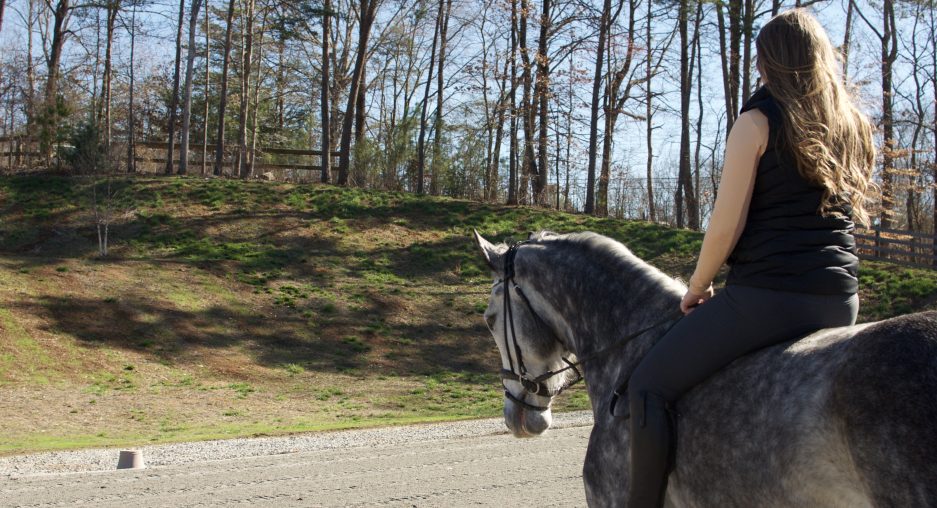
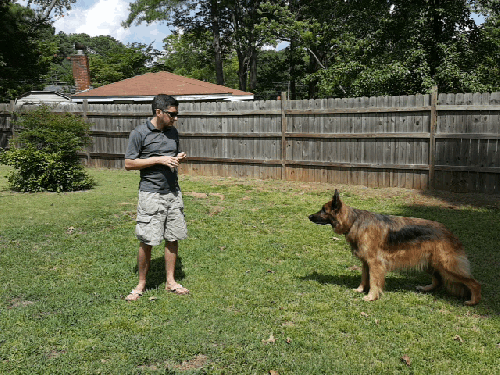
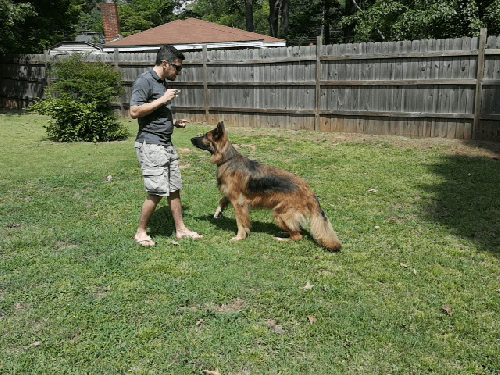
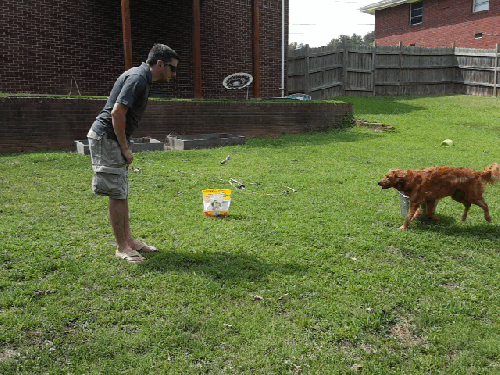

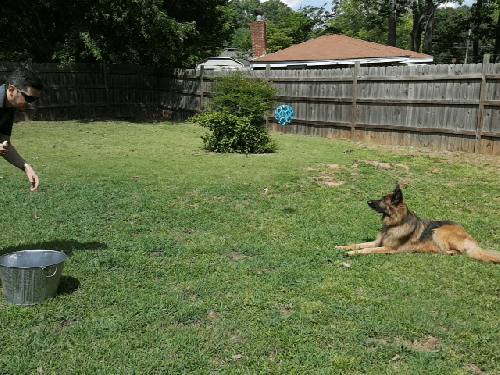
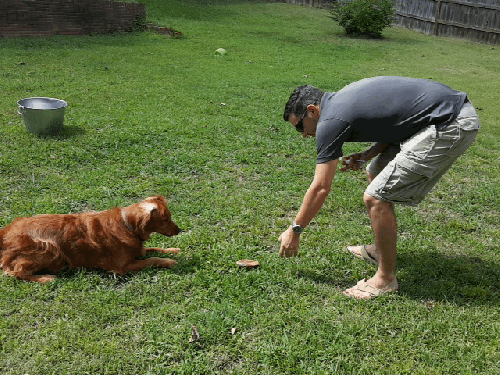
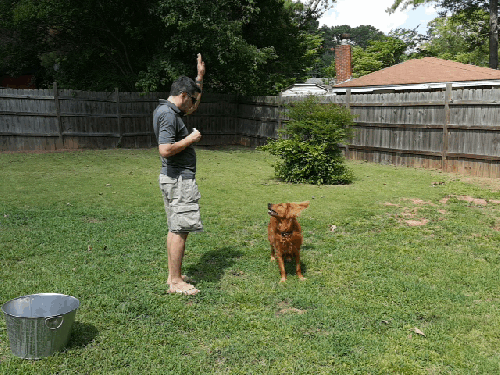
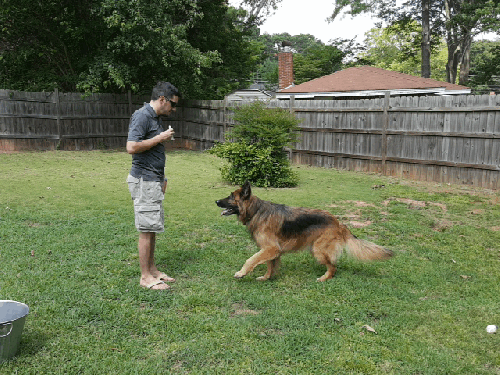
All good skills for a barn dog to have. I need to work on Sonnys stay more. Generally speaking he is a well mannered barn dog and understands his boundaries though. Great tips! Thanks!
LikeLike
love your use of gifs! i seriously have little to no tolerance for dogs with poor manners – and think it’s so awesome that you’ve worked so hard to turn your pups into solid citizens!
LikeLike
When I Tell my cats to drop they usually turn on their heels and head towards the food bowls. I may need that tutorial 🙂
LikeLike
Good post! Working with your dog before going to the barn is SO important. My puppy has mastered the basics, but still needs to figure out the concept of staying put while I’m riding. Shiloh doesn’t appreciate all the beagle scampering while he’s trying to work!
LikeLike
LOVE THIS. Thank you so much. Rocky is my first dog, and while he will never be a barn dog, I have been working on getting him to be more obedient off-leash. I don’t know very much about training dogs (especially because I don’t have much experience), so any tidbits I can pick up I really appreciate. Thanks!
LikeLike